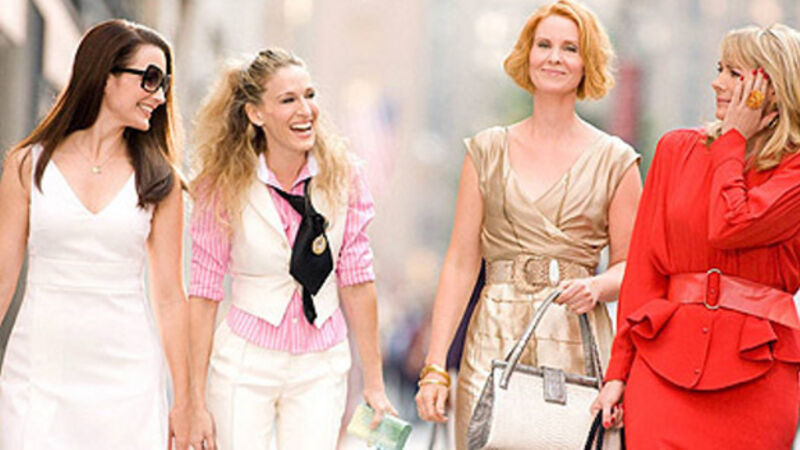The reel story: why female characters only ever talk about men

THINK of the last three movies you watched. Chances are they wouldn’t pass the Bechdel Test. Created by American cartoonist Alison Bechdel in 1985, the simple requirements of this test are that the film has to have at least two women in it, who talk to each other, about something other than a man.
Now surely, you’re thinking, this is such a simple ask that it has to take place in most movies, right? Unfortunately, you’d be mistaken. Out of a list of films recently screening at the Gate cinema in Cork, only two pass the test, The Other Woman and Rio 2, while Bad Neighbours, Brick Mansions, Frank, Plastic, Sabotage, and Tarzan 2 fail miserably.
HBO’s Sex And The City, written by Michael Patrick King and Darren Star, passed the test primarily because when the four female leads, described by screenwriter Susan Rice as “a gay man’s idea of what women are like”, weren’t moaning about men, they were conversing about clothes.
The reason for the dearth of well-rounded realistic female characters on our screens may have something to do with the lack of women to be found behind the scenes.
A recent study by Martha Lauzen, executive director of the Centre for the Study of Women in Television and Film, revealed that women comprised only 16% of all directors, producers, writers, cinematographers, and editors working on the top 250 domestic grossing films in 2013. Only 15% of all clearly identifiable protagonists in the films were female, while 78% were male.
From a young age, I unconsciously used film and television as surrogate parents whose advice and direction I craved. The realisation that I had been fed many of my beliefs by this surrogate parent made me back away from the teat and look at my ‘parent’ anew. If men have written most of these storylines and characters, what has that done to my psychological make-up? If women had written most of these storylines and characters, would it have made a difference to the way I view the world today, to paraphrase Judith Butler, to the way I perform my gender?
Kay Mellor’s Band of Gold, broadcast on ITV from 1995-1997, was the first piece of on-screen narrative I had seen where women spoke to each other like women speak to each other in real life, not how male writers imagine women speak to each other. Even though the show revolved around the lives of prostitutes, very little of the dialogue was about their interactions with men, but was instead about their friendships with each other, their aspirations, their children, and their demons.
Watching it enthralled, I realised that I had been the ignorant recipient of a fallacy up until this point; a misleading, deceptive, notion that the female characters I was witnessing on TV and in film were accurate portrayals of women in the 20th century. Is it any wonder then that I found myself constantly at odds with the limited stereotyped female characters I found myself lazily lounging in front of, the “virgins, vamps, victims, suffering mothers, child women, and sex kittens… the homicidal, man-eating lesbian, the African American mammy, the tragic mulatto, and the Asian dragon lady“, listed by P. White in The Oxford Guide to Film Studies (1998).
But it wasn’t always this way. Women dominated the screenwriting market during the era of silent film, and afterwards. Gene Gauntier is credited as the woman behind the modern screenplay. She wrote straight for the screen scenarios that included technical language, and was responsible for adapting Lew Wallace’s novel Ben Hur. In the early years of film-making, women outnumbered men in the screenwriting trade ten to one. So, what happened? In a nutshell it became a lucrative business and therefore the men stepped in, mirroring exactly the events that led to the downfall of the female Victorian novelist. Once there was money to be made, it became ‘men’s work’.
Martha Lauzen’s study shows a decline from last year in the number of women working in film, which means a decline in the number of women’s stories we’re being shown and a decline in the number of female representation we have on-screen. Cork Feminista are launching their new Cineclub tonight at the Camden Palace Hotel in Cork. Dedicated to showing movies solely by female writers and directors, this monthly Cineclub wishes to redress the balance by highlighting movies made by women; movies that don’t depict women seen through the lenses of gay men, or any man, but versions of women in reel life as we really are, in real life.
*










